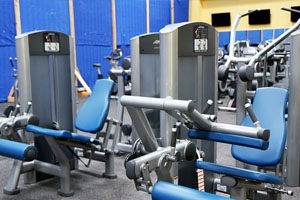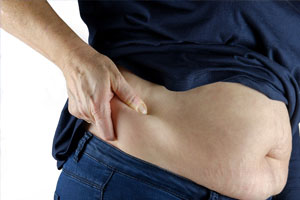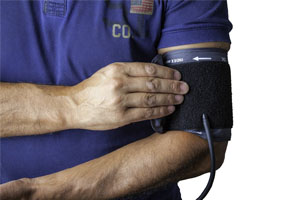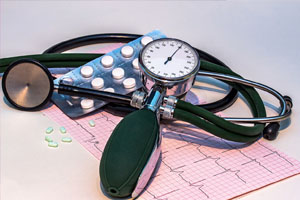Explore the underlying causes, common symptoms, and effective treatments for cervical spondylosis Learn how to manage neck pain and improve your spinal health
Cervical Spondylosis, often referred to as cervical osteoarthritis, is a common age-related condition affecting the cervical spine. What is the main cause of cervical spondylosis? It primarily results from the natural wear and tear on the neck's vertebrae and intervertebral discs over time. This article explores the causes, symptoms, diagnosis, preventive measures, and treatment options for cervical spondylosis, providing valuable insights into this prevalent issue and how it can be managed effectively.

Understanding Cervical Spondylosis
1. Cervical Spondylosis, also known as cervical osteoarthritis, is a common condition that affects the cervical spine, which is the seven small vertebrae in the neck. It's important to grasp the basics of this condition to appreciate its causes and impact.
2. The cervical spine naturally undergoes wear and tear over time, and cervical spondylosis is essentially the result of this aging process. Here's what you should know:
3. The intervertebral discs, which act as cushions between the vertebrae, tend to lose fluid and become less flexible as we age. This can lead to a narrowing of the spaces between the vertebrae and the development of bone spurs or osteophytes.
4. As the condition progresses, it may put pressure on the spinal cord or the nerves in the neck, causing a range of symptoms. Understanding the structural changes that occur in the cervical spine is crucial to comprehend why cervical spondylosis occurs.
5. Additionally, understanding the risk factors, including age, lifestyle choices, and genetics, that contribute to the development of cervical spondylosis is important for prevention and management.
The Causes of Cervical Spondylosis
1. Age as a Key Factor
Cervical spondylosis is predominantly an age-related condition. As we grow older, the natural wear and tear on the cervical spine become more apparent. The intervertebral discs lose fluid and flexibility over time, resulting in structural changes that can contribute to the development of cervical spondylosis.
2. Lifestyle and Habits
2. Lifestyle and Habits
Various lifestyle factors and habits can also play a role in the development of cervical spondylosis. These may include:
- Poor posture, especially while working or using digital devices for extended periods.
- Smoking, which can accelerate the degeneration of spinal discs.
- Lack of regular exercise and physical activity, which can lead to muscle weakness and reduced support for the spine.
3. Genetic Predisposition
While aging and lifestyle choices are primary factors, there is also evidence to suggest that genetic predisposition can increase the risk of developing cervical spondylosis. If you have a family history of this condition, it's essential to be aware of the potential genetic influences and take preventive measures accordingly.
Common Symptoms and Diagnosis
1. Neck Pain
One of the most common symptoms of cervical spondylosis is neck pain. This pain may start as a mild discomfort and gradually worsen over time. It is often localized to the neck and may radiate to the shoulders and upper back. The pain can vary in intensity and may be aggravated by certain movements or positions.
2. Numbness and Tingling
Numbness and tingling sensations in the arms and hands are also frequently reported. This occurs because the degeneration of the cervical spine can compress nerves that extend into the upper limbs. It's important to pay attention to these sensations, as they may indicate nerve compression.
3. Diagnostic Tests
To diagnose cervical spondylosis, healthcare professionals may use several diagnostic tests, including:
- Magnetic Resonance Imaging (MRI) to visualize the cervical spine and identify structural changes.
- Computed Tomography (CT) scans for detailed imaging of the affected area.
- X-rays to examine the alignment of the vertebrae and detect bone spurs or other abnormalities.
- Electromyography (EMG) to assess nerve function and identify any abnormalities.
- Physical examinations to evaluate range of motion, reflexes, and strength in the arms and hands.
Early diagnosis is essential to determine the extent of the condition and develop an appropriate treatment plan.
Preventive Measures
1. Maintaining Good Posture
One of the key preventive measures for cervical spondylosis is maintaining good posture. Ensure that you sit and stand with your back straight, shoulders relaxed, and your computer monitor at eye level. Avoid prolonged periods of looking down at your phone or screen, as this can strain the neck and contribute to spondylosis.
2. Regular Exercise and Stretching
2. Regular Exercise and Stretching
Engage in regular exercise to strengthen the muscles that support your neck and spine. Focus on exercises that improve flexibility and maintain a healthy range of motion. Incorporating neck and shoulder stretches into your routine can also help alleviate tension and reduce the risk of spondylosis.
3. Ergonomics at Work
3. Ergonomics at Work
If you have a desk job, make sure your workspace is ergonomically designed. Use an adjustable chair and keyboard tray to maintain proper posture. Take breaks to stretch and change positions regularly. A well-designed workspace can significantly reduce the strain on your neck and spine during long work hours.
Treatment Options
1. Physical Therapy
Physical therapy is a common and effective treatment option for cervical spondylosis. It involves exercises, stretches, and manual techniques aimed at improving neck and spine mobility, reducing pain, and strengthening the supporting muscles. A physical therapist can tailor a program to your specific needs and monitor your progress.
2. Medications
Medications may be prescribed to manage the symptoms of cervical spondylosis. Nonsteroidal anti-inflammatory drugs (NSAIDs) can help reduce pain and inflammation. Muscle relaxants may be recommended to ease muscle spasms. In some cases, your healthcare provider may suggest pain-relief injections or prescription medications.
3. Surgery (in severe cases)
Surgery is typically considered only in severe cases of cervical spondylosis where conservative treatments have been ineffective, and there is a risk of serious complications. Surgical procedures may involve removing bone spurs, fusing vertebrae, or decompressing the spinal cord or nerves. The decision to undergo surgery is made on an individual basis after a thorough evaluation by a healthcare professional.
FAQs about Cervical Spondylosis
Q1. What are the primary risk factors for developing cervical spondylosis?
A1. The primary risk factors for developing cervical spondylosis include age, poor posture, genetic predisposition, smoking, and a sedentary lifestyle. These factors contribute to the wear and tear on the cervical spine over time.
Q2. Is cervical spondylosis a painful condition?
A2. Cervical spondylosis can be painful, but the severity of pain varies among individuals. Common symptoms include neck pain, stiffness, and radiating discomfort. However, some people may experience mild symptoms, while others may have more severe pain or neurological symptoms like numbness and tingling.
Q3. Can cervical spondylosis be prevented or managed without surgery?
A3. Yes, cervical spondylosis can often be prevented and managed without surgery. Non-surgical treatments, including physical therapy, medications, lifestyle modifications, and ergonomic adjustments, are effective in most cases. Surgery is usually considered when non-surgical approaches are ineffective or in severe cases.
Q4. Are there specific exercises that can help alleviate cervical spondylosis symptoms?
A4. Yes, there are exercises that can help alleviate cervical spondylosis symptoms. Neck and shoulder stretches, as well as strength-building exercises for the supporting muscles, can improve flexibility and reduce discomfort. Physical therapy can provide tailored exercise programs to address individual needs.
Q5. What is the role of posture in cervical spondylosis prevention?
A5. Posture plays a crucial role in preventing cervical spondylosis. Maintaining good posture while sitting and standing reduces the strain on the neck and spine. Proper ergonomics at work, such as using an ergonomic chair and keyboard setup, can also help maintain a healthy posture and reduce the risk of spondylosis.










